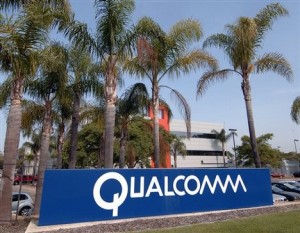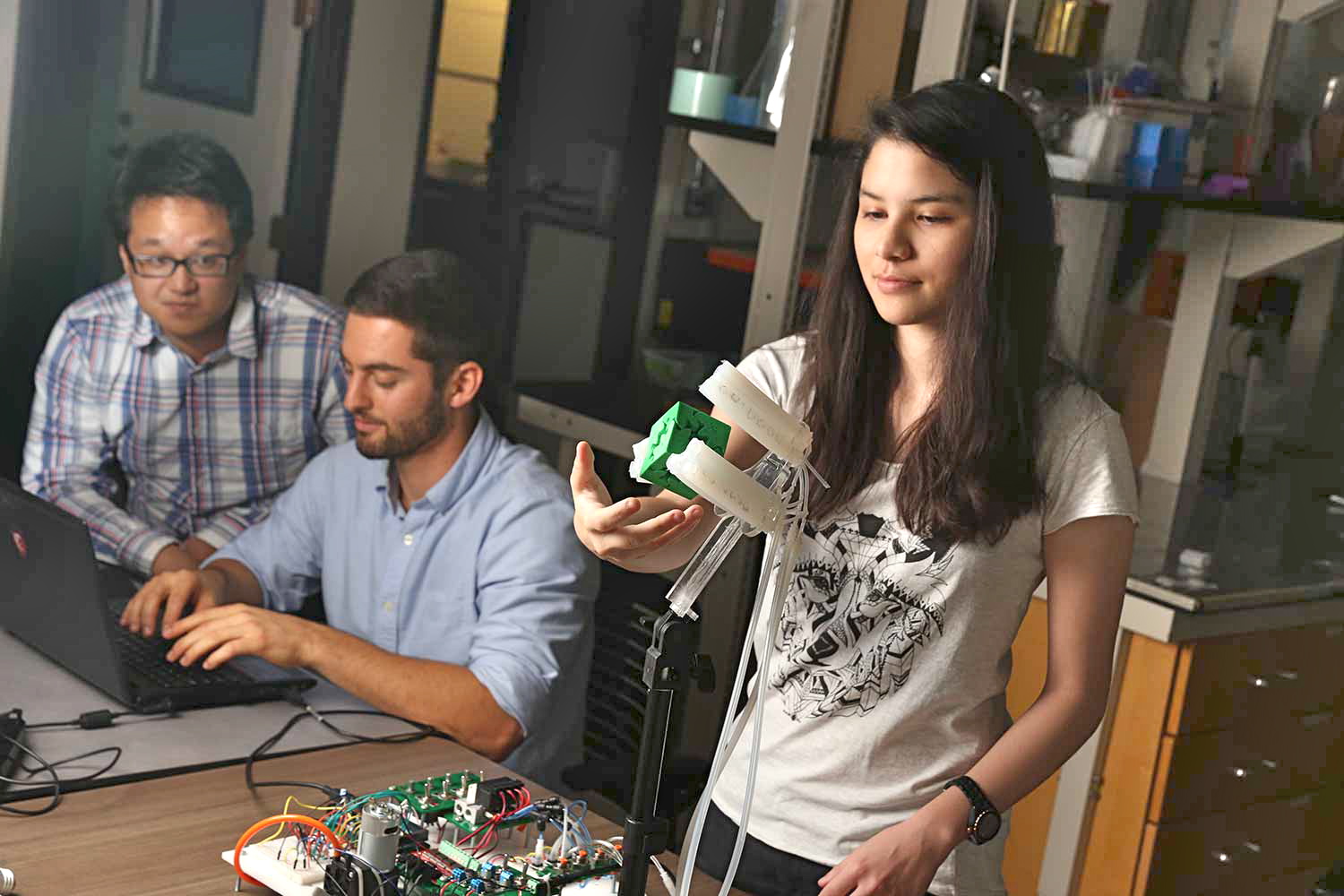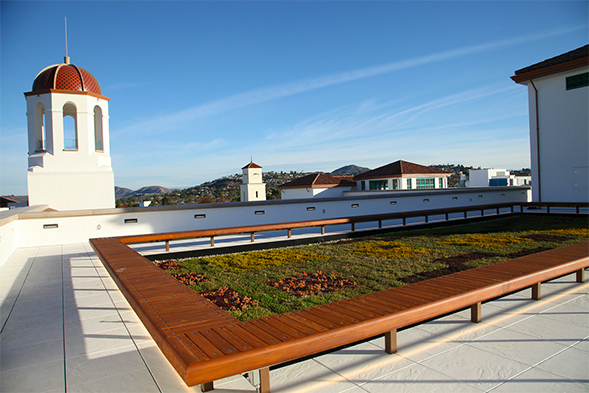Daily Business Report-Nov. 2, 2015
Rendering of the Engineering and Interdisciplinary Sciences Complex to be built at San Diego State University.
SDSU to Begin Construction on Engineering
And Interdisciplinary Sciences Complex
San Diego State University will hold a groundbreaking on Nov. 6 for its Engineering and Interdisciplinary Sciences Complex, a facility aimed at enhancing the university’s teaching and research capabilities and boosting its ability to attrack top researchers and graduate students.

The ceremony is slated for 10 a.m.
The complex will host several established research centers, including The Viromics Institute, The Smart Health Institute, and an imaging laboratory for brain research.
Other research areas will include biomedical engineering, renewable energy systems, and wireless communication.
The William E. Leonard Entrepreneurship Center will contain programs designed to bring faculty and student innovations to market. The Zahn Innovation Platform will bring business mentoring and prototyping and design experience to researchers.
The Lavin Entrepreneurship Center will bring industry experts to offer curriculum guidance and an insider look at how markets are evolving.
“A common theme among these projects will be engineers and scientists recognizing opportunities for taking research and transforming it into real-world solutions,” according to a prepared a university announcement.
_______________________________________
Qualcomm Ends Techstars Robotics
Accelerator, Looks for Alternatives
By Bruce Bigelow/Xconomy

Qualcomm has ended its partnership with Techstars, less than two months after graduating the inautural class of 10 startups from the Qualcomm Robotics Accelerator, powered by Techstars. The San Diego wireless giant had indicated the program would continue for three years.
The decision to terminate the robotics accelerator was confirmed on Friday by Qualcomm CTO Matt Grob, who said the intense, four-month mentoring program was successful. But he indicated it was difficult for the wireless technology giant to justify the costs when the company was experiencing hard times.
Qualcomm and Techstars announced the formation of the robotics accelerator just over a year ago. The San Diego-based company began to lay off employees in September, after revealing plans to cut its global workforce of 31,300 by 15 percent over the next year. Qualcomm has said it intends to trim expenses by $1.4 billion a year.
In addition to providing a $100,000 loan to each of the 10 companies admitted to the robotics accelerator, Qualcomm paid Techstars to manage the program, and renovated a 7,000-square-foot collaborative space for the accelerator in a building at Qualcomm headquarters.
“I would say the overall effort was successful,” Grob said during a break at an all-day conference on contextual robotics Friday at UC San Diego, where he was a morning speaker. The robotics accelerator was successful enough for Qualcomm to look at other ways of underwriting incubator-type programs in the future, he said.
For Qualcomm, Grob added, “It was a question of whether we’ll continue with Techstars.”

UC San Diego Launches
Robotics Institute
The Jacobs School of Engineering and Division of Social Sciences at the University of California, San Diego have launched the Contextual Robotics Institute to develop safe and useful robotics systems. These robotics systems will function in the real world based on the contextual information they perceive, in real time. Elder care and assisted living, disaster response, medicine, transportation and environmental sensing are just some of the helpful applications that could emerge from tomorrow’s human-friendly robots.
The Contextual Robotics Institute will leverage UC San Diego’s research strengths in engineering, computer science and cognitive science and work collaboratively across the campus and the region to establish San Diego as a leader in the research, development and production of human-friendly robotics systems.
“This is an extremely exciting time for robotics researchers,” said UC San Diego Chancellor Pradeep K. Khosla, who is also a world-renowned roboticist. “Many robotics subfields have seen incredible advances in the last few years. The time is right for UC San Diego to step up and take a leadership role in the future of robotics.”
More than 40 UC San Diego professors and research scientists have elected to be a part of the Contextual Robotics Institute at its launch. These researchers and their teams are performing $10 million in robotics-related research this year.
The UC San Diego Jacobs School of Engineering is currently working to hire a faculty director for the Institute as well as three additional robotics faculty. This comes on the heels of four robotics hires at the Jacobs School over the last two years.
“One of my goals for this Institute is to ensure that San Diego develops into a world-class center for the design, development and production of useful consumer robotics that act based on a real-time understanding of the world,” said Albert P. Pisano, Dean of the UC San Diego Jacobs School of Engineering. “Now is the time to focus on systems integration and assemble ever more perceptive robotics systems.”
Achieving this goal will require significant collaborations between researchers at the Jacobs School of Engineering, the Division of Social Sciences and across the entire campus.
Pot Advocates to Begin Signature
Drive for California Ballot Measure
City News Service

What could be a resolution to the long-running debate over medical marijuana in San Diego and across California took a step forward Friday when backers of a proposal to legalize the drug won the state’s OK to gather petition signatures needed to put the idea before voters.
If enacted, the state would see a huge financial windfall through law enforcement cost savings and the new taxation of the drug and drug businesses.
More than $100 million in law enforcement costs could be saved if the measure becomes law, according to state officials. In addition, millions would be raised by taxing the drug industry.
The “Marijuana Legalization Initiative Statute” needs 365,880 valid signatures of registered voters in the state to be placed on the November ballot next year. Those signatures must be collected no later than April 26.
The measure would legalize marijuana, create a commission to license and regulate a marijuana industry, impose a tax of 42 cents per gram on “dried marijuana” and $2 per gram on concentrated marijuana and allows for local taxation of up to 10 percent on marijuana sales.
According to the state’s legislative analyst and director of finance, the measure would save California “tens of millions of dollars” — or as much as $100 million or more annually — by cutting the costs of current legal enforcement.
Parent of 2 Southern California
Newspapers Files for Bankruptcy
Times of San Diego
In another sign of the deteriorating market for printed newspapers, the parent company of the Orange County Register and Riverside Press-Enterprise federal bankruptcy protection.
The filing by Freedom Communications came as part of a management-led plan to acquire the struggling newspaper company. The news was reported in an article in the Register.
Rich Mirman, Freedom’s CEO and publisher, along with other investors, filed in the U.S. Bankruptcy Court’s Central District of California to reorganize the Santa Ana-based company’s finances and assume ownership.
Mirman said the filing will have no impact on day-to-day operations or on staffing levels.
“As publisher, I am committed to the company’s mission of delivering relevant and essential local information that serves our communities,” Mirman said. “As an investor, I am dedicated to strengthening the financial health and well-being of the business.”
He said the company is on course to generate an operating profit in 2015 after two years of losses.
The filing brings to an end Boston entrepreneur Aaron Kushner’s ownership of the newspapers. Kushner bet heavily on print, adding reporting staff and expanding into the Los Angeles market while building up significant debt. He also de-emphasized online publishing and put up one of the industry’s strictest paywalls to force readers to use the print edition.
“We’re turning the page and starting a new chapter,” Mirman told the Register. “We’ve gone through a few rocky years and we need to redefine ourselves.”
The Los Angeles Times reports that its parent company, Tribune Publishing, which also owns The San Diego Union-Tribune, could put in a bid for ownership.
Illumina Launches $250 Million
Share Repurchase Program
Illumina’s board of directors has authorized the repurchase of up to $250 million of its own common shares in the open market or in privately negotiated transactions, the firm said today.
The company also completed the existing discretionary authorization of $96 million that was repurchased since Illumina reported its third quarter earnings last month.
Although Illumina reported a 14 percent year-over-year increase in its third quarter revenues last month, the firm missed its target by 3 percent. It finished the quarter with $551.5 million in cash and cash equivalents and $887.9 million in short-term investments.
The repurchase program is “indicative of our strong financial position, which enables us to opportunistically execute share repurchases to deliver value to our shareholders, while investing in the long-term growth of the business,” Illumina Senior Vice President and CFO Marc Stapley said in a statement. In addition, it “reflects our conviction in Illumina’s long-term strategy and revenue growth trajectory, as we penetrate the many large, untapped market opportunities ahead,” he added.
Shares of Illumina were up around 1 percent at $145.15 in early Monday trade on the Nasdaq.
Personnel Announcements
Mike Shepard Named a Vice President
Of Broadcast Company of the Americas

Mike Shepard has been named vice president of programming and operations fot Broadcast Company of the Americas. ) operates The Mighty 1090 AM (1090.com), 105.7 MAX-FM, (1057max.com) and ESPN 1700 AM, and holds the radio broadcast rights for the San Diego Padres, San Diego State Aztecs Football and Basketball and San Diego Gulls Hockey.
Shepard joined BCA in May 2011 as the programming and operations manager. Prior to BCA, he was the vice president of programming and operations for Jefferson Pilot-owned KSON-FM, KIFM-FM, KBZT-FM in San Diego. He also held senior management roles for industry research and marketing companies including Moyes Research, Pinnacle Media Research, P1 Research and Shepard Media Research.
Coronado Resident Appointed
To Toxic Substances Review Panel
Mike Vizzier, 65, of Coronado, has been appointed to the California Department of Toxic Substances Control Independent Review Panel. Vizzier has served as chief of the San Diego County Department of Environmental Health’s Hazardous Materials Division since 2007, where he was a hazardous materials inspector from 1995 to 2007 He served in the U.S. Marine Corps from 1972 to 1992. Vizzier earned a Master of Science degree in systems management from the University of Southern California.
The position does not require Senate confirmation and the compensation is $100 per diem. Vizzier is a Democrat.

Sally Ride Science Launches at UC San Diego
Blasting aboard space shuttle Challenger in 1983 to become the first American woman — and at age 32, the youngest American in space — the late Sally Ride captured the nation’s imagination by breaking barriers. Her legacy also includes inspiring generations of students to pursue careers in science, technology, engineering and math (STEM) through Sally Ride Science, a science education company she co-founded in 2001.
In a partnership agreement announced by the UC San Diego, future generations — especially girls and historically underrepresented K-12 students will be motivated to continue with STEM in school and beyond through Sally Ride Science at UC San Diego. The newly created program aligns with the university’s strategic plan to expand existing initiatives and implement new approaches that result in accessible and affordable learning for all. The agreement was effective Oct. 1.
Sally Ride Science at UC San Diego will focus on these target areas: professional development for teachers; K-12 STEM + Arts (STEAM) education including courses, lectures and events; and online programming via UCTV. The program will be implemented through the university’s Extension, Supercomputer Center, and Scripps Institution of Oceanography.
Two of the Sally Ride Science cofounders, Tam O’Shaughnessy and Karen Flammer, will be part of the new program.
Scripps Institution of Oceanography will take delivery in 2016 of America’s newest oceanographic research vessel: R/V Sally Ride. Under construction now by the U.S. Navy, the ship was christened Sally Ride by Secretary of the Navy Ray Mabus in honor of Sally Ride’s remarkable legacy of scientific accomplishment, technical achievement, space exploration and commitment to science education.
She co-founded Sally Ride Science in 2001 and served as CEO of the company until her death from pancreatic cancer in 2012 at age 61.




